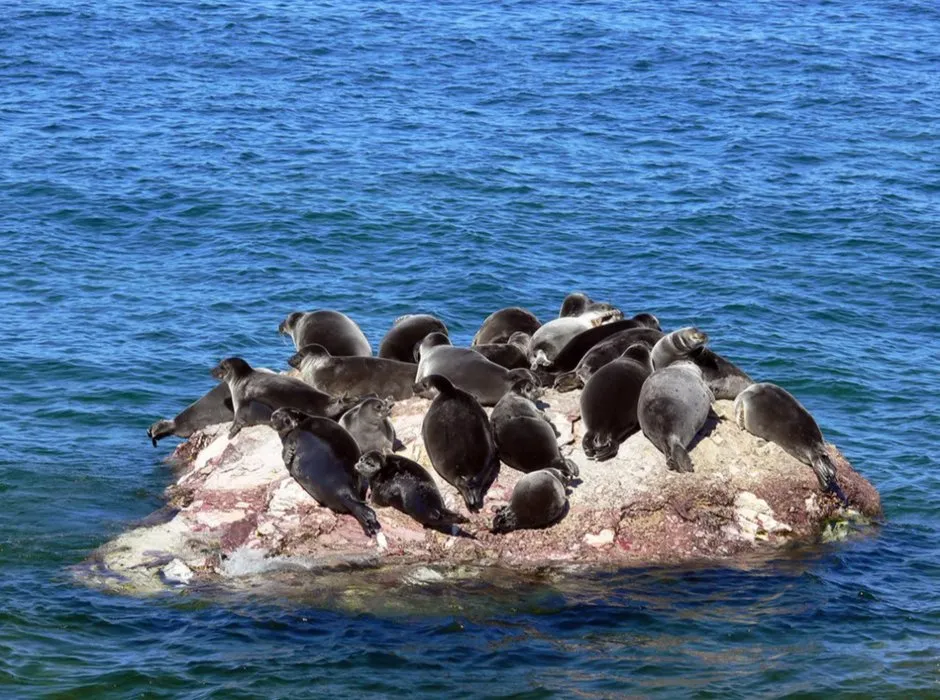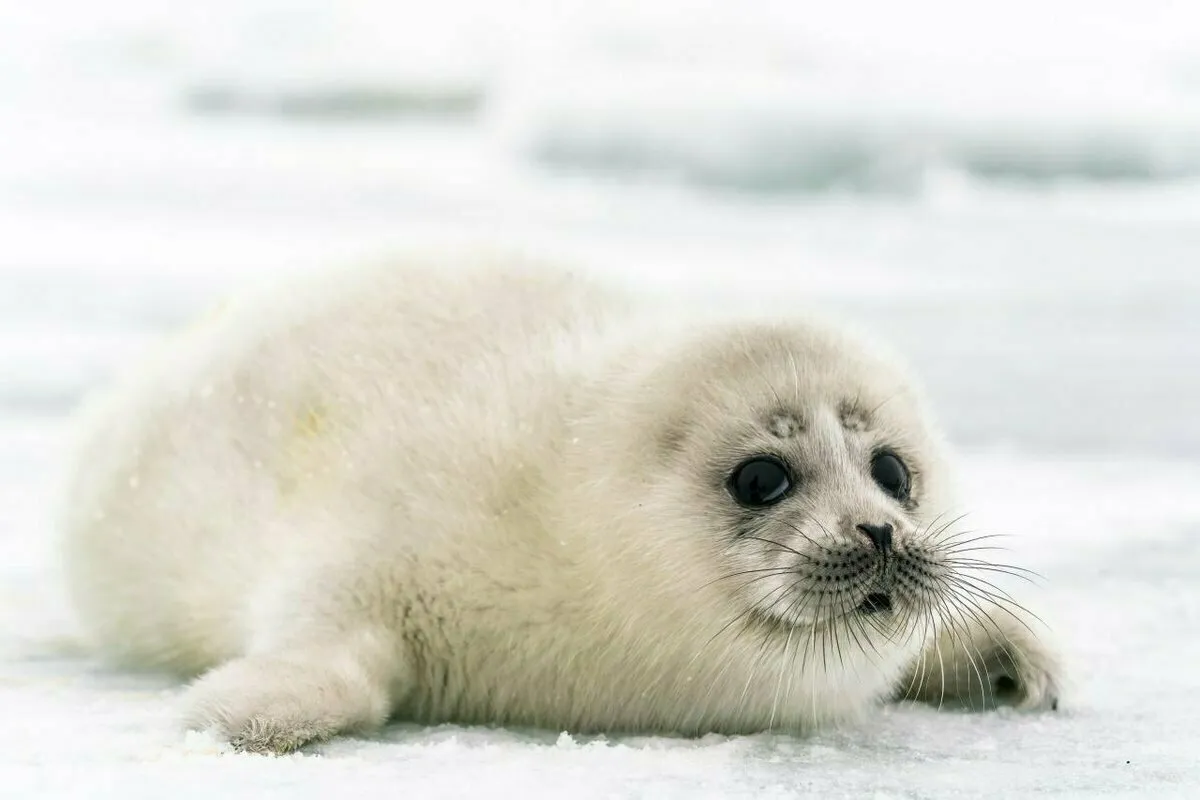There can be your advertisement
300x150
The Deepest Lakes in the World: What Lies Beneath the Surface of Water Giants
We reveal the unique features and mysteries of the deepest lakes on the planet
Lakes are among the most mysterious natural objects on our planet. They hold secrets of the past, unique ecosystems, and sometimes entire underwater worlds. But among all lakes, the deepest ones stand out especially. Let's take a look into the depths of the deepest lakes in the world and discover what lies beneath their surface.
- The deepest lake in the world is Lake Baikal, with a maximum depth of 1642 meters;
- Unique species of animals live in deep lakes, adapted to life in darkness and under high pressure;
- Deep lakes play an important role in studying the climate of the past;
- Many deep lakes are threatened by human activity;
- Studying deep lakes helps scientists in the search for life on other planets.
Lake Baikal: A Wonder of Siberia
Lake Baikal is not only the deepest but also the oldest lake on Earth. Its age is estimated at 25-35 million years. The maximum depth of Lake Baikal is 1642 meters, which is comparable to the height of 11 Statue of Liberties stacked on top of each other.
However, Lake Baikal is unique not only for its depth. It contains about 20% of all freshwater on the planet. If all the world's freshwater bodies suddenly disappeared, one Lake Baikal would be enough to supply all of humanity with drinking water for 40 years.
The ecosystem of Lake Baikal is remarkable in its diversity. It is home to over 2500 species of animals, and 80% of them are endemic, meaning they occur nowhere else. The most famous inhabitant of the lake is the Baikal seal—the only freshwater seal in the world.
But the real wonders lie beneath the surface. In eternal darkness, strange creatures live. For example, the golomyanka is a transparent fish through whose skin you can see internal organs. There are also giant amphipods, the size of a palm—ancient crustaceans that survived the age of dinosaurs.
 Photo: ria.ru
Photo: ria.ruLake Tanganyika: Africa's Twin to Baikal
The second deepest lake in the world is Lake Tanganyika in Eastern Africa. Its maximum depth is 1470 meters. Like Baikal, Lake Tanganyika is very ancient—it is about 10 million years old.
Lake Tanganyika is known for its cichlids—vibrant fish often kept in aquariums. The lake is home to more than 250 species of cichlids, and nearly all are endemic. The evolution of these fish in a closed water body is a classic example of speciation studied by biologists all over the world.
However, Lake Tanganyika has a dark side. At depths over 100 meters, the water in the lake contains hydrogen sulfide and is almost devoid of oxygen. This 'dead zone' makes up about 80% of the lake's volume. Nevertheless, even here life exists: some bacteria have learned to survive in these extreme conditions.
 Photo: pinterest.com
Photo: pinterest.comThe Caspian Sea: Is it a Lake or a Sea?
Despite its name, the Caspian Sea is actually a lake. Its maximum depth is 1025 meters. The Caspian is the largest enclosed water body on Earth, with an area roughly equivalent to the territory of Japan.
The Caspian Sea is known for its sturgeon caviar, but unfortunately, the sturgeon population here has significantly declined due to overfishing. However, the Caspian is home to the Caspian seal—the smallest seal in the world.
Interestingly, the water level of the Caspian Sea constantly changes. Over the past 3000 years, it has fluctuated within a range of 15 meters. Scientists still debate the causes of these fluctuations, but many link them to climate change.
 Photo: pinterest.com
Photo: pinterest.comWhy Do We Need Deep Lakes?
Deep lakes are more than just beautiful natural features. They play a crucial role in science and ecology.
Firstly, sediments from the bottom of deep lakes are like time machines. By studying the composition of these deposits, scientists can learn what the climate was like thousands or even millions of years ago. For example, studies of Baikal's sediments helped reconstruct the climate history of Siberia over the last 12 million years.
Secondly, deep lakes are natural laboratories for evolution. Isolated water bodies create conditions for the emergence of unique species of animals and plants. Studying these processes helps us understand the mechanisms of evolution in general.
Finally, studying life in extreme conditions in deep lakes can help in the search for life on other planets. For example, the conditions in the depths of Lake Baikal resemble those that might exist in the subsurface oceans of Jupiter's moons.
Threats from Below and the Surface
Unfortunately, even the deepest lakes are not protected from human influence. Pollution, overfishing, and climate change all threaten their unique ecosystems.
The main issue on Lake Baikal is pollution. The cellulose and paper factory operating on the lake’s shore for more than 40 years caused serious damage to its ecology. Although the factory was closed in 2013, its effects are still felt today.
Lake Tanganyika suffers from overfishing and deforestation of its shores. This leads to soil erosion and water pollution, threatening the unique fauna of the lake.
The Caspian Sea faces the problem of oil pollution. Oil extraction has been taking place here for over a century, and this inevitably affects the ecological condition of the water body.
However, there are also good news. Many countries are taking measures to protect deep lakes. For example, Lake Baikal has been designated as a UNESCO World Heritage Site, which helps draw attention to its issues.
Deep lakes are unique natural laboratories, stores of freshwater, and homes to thousands of species of living beings. Studying and preserving them is an important task not only for scientists but for all of humanity. These aquatic giants hold not only secrets of the past, but also keys to understanding the future of our planet.
Cover: pinterest.com
More articles:
 Burning Man: Why Thousands of People Go to Burn a Human Figure in the Desert
Burning Man: Why Thousands of People Go to Burn a Human Figure in the Desert The Scent of Autumn: How to Create a Cozy Atmosphere Without Leaving Home
The Scent of Autumn: How to Create a Cozy Atmosphere Without Leaving Home Capsule Wardrobe for Fall 2024: Building a Basic Clothing Set for Every Occasion
Capsule Wardrobe for Fall 2024: Building a Basic Clothing Set for Every Occasion 5 Cool Storage Ideas Inspired by a 44 m² Khrushchev Apartment
5 Cool Storage Ideas Inspired by a 44 m² Khrushchev Apartment Communal Paradise or Utopia in Concrete: The History of the House of Narkomfina
Communal Paradise or Utopia in Concrete: The History of the House of Narkomfina 5 Cool Design Solutions for Small Apartments
5 Cool Design Solutions for Small Apartments How a Dead Kitchen Became a Retro Bathroom (Photo Before and After)
How a Dead Kitchen Became a Retro Bathroom (Photo Before and After) Bathroom: 7 Modern Trends That Will Stay With Us Forever
Bathroom: 7 Modern Trends That Will Stay With Us Forever